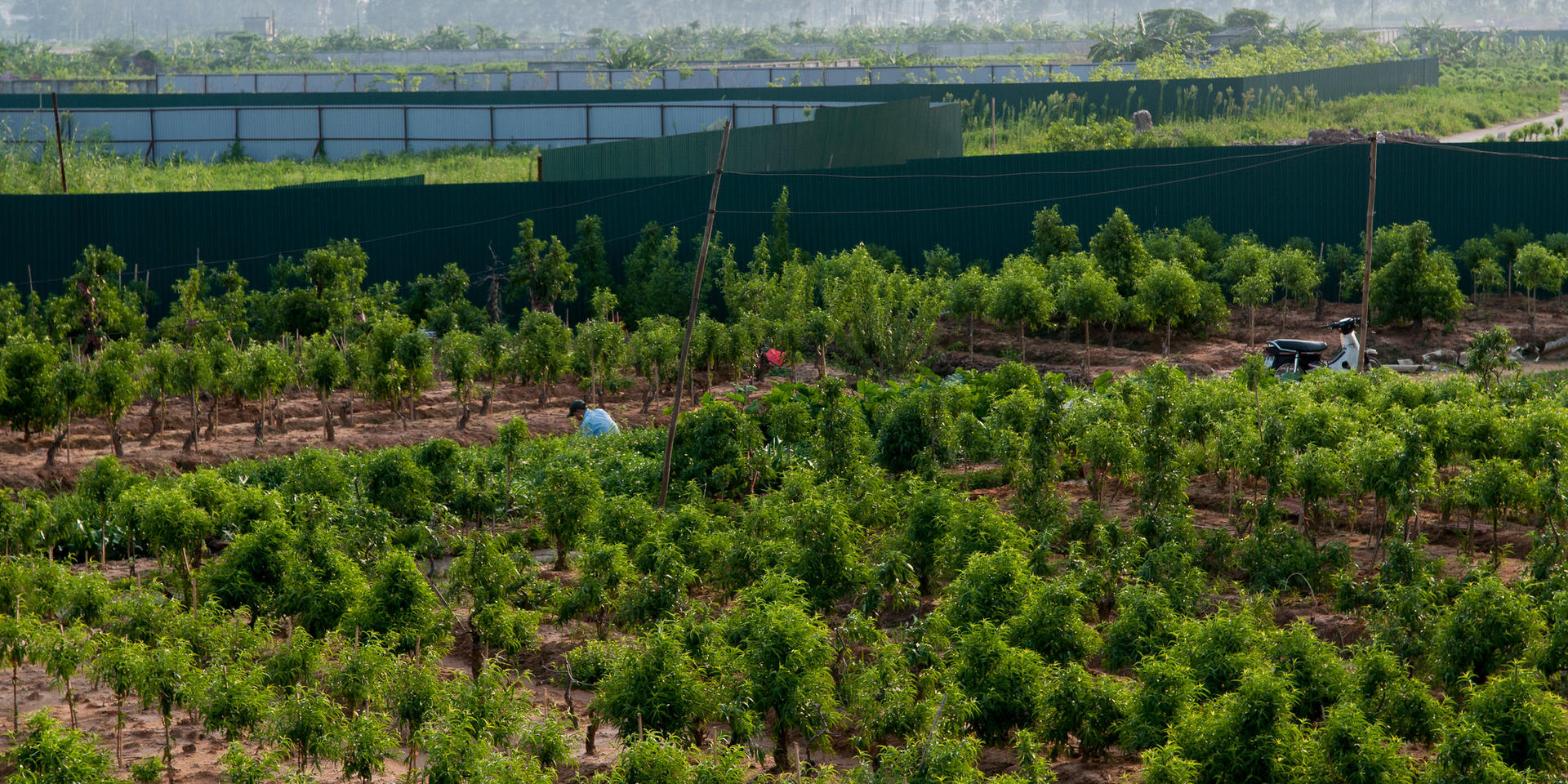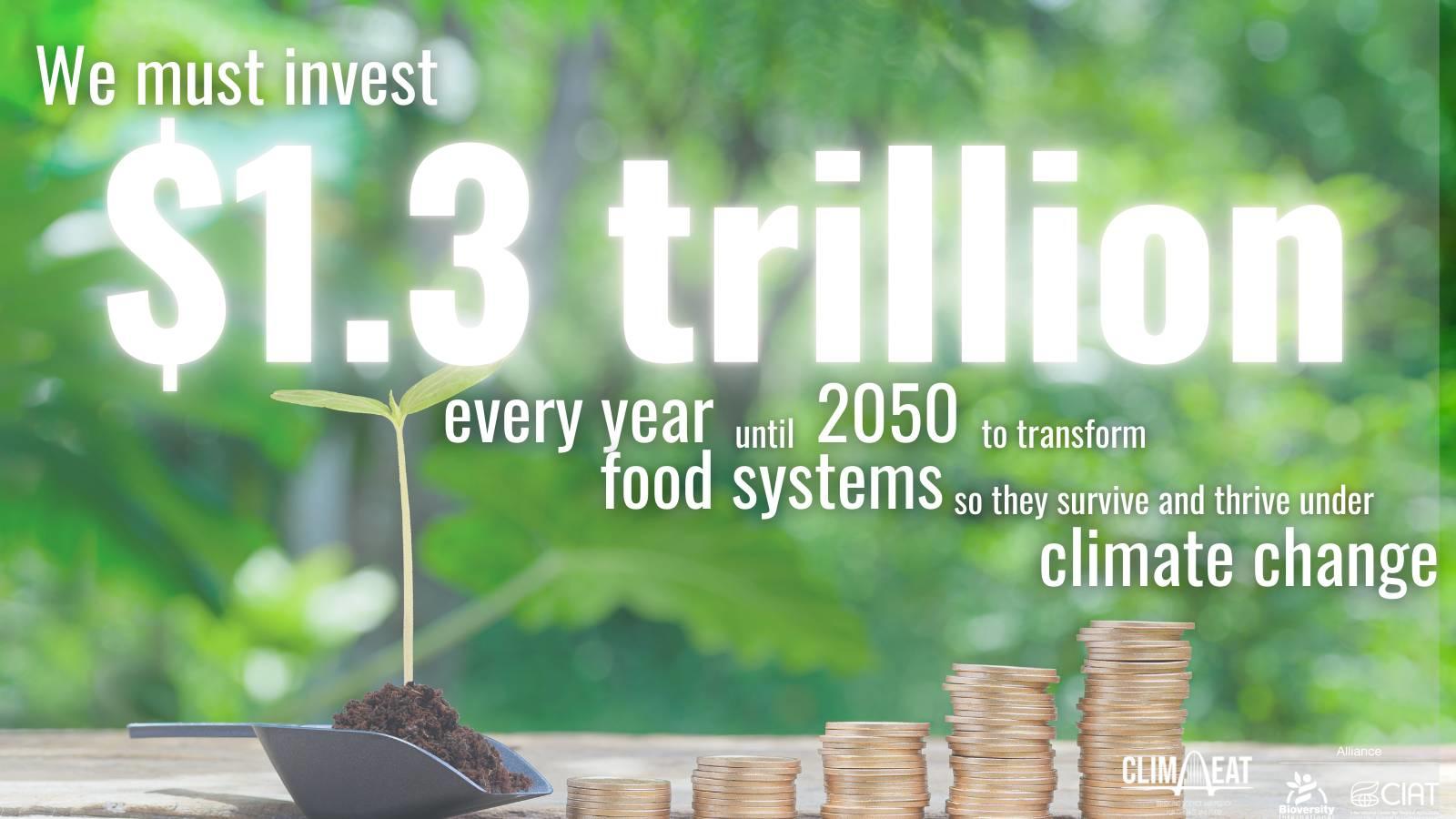Research Articles The $1.3 trillion set menu for food systems transformation

©2015CIAT/GeorginaSmith
Focusing on the positive, actionable insights from the latest IPCC report helps us pay for food system transformation under climate change, says Bruce Campbell.

“Transformation is a set menu, not a la carte'" is a saying my Clim-Eat colleague Philip Thornton has used often, of late. He’s right, and we now know the price of that set menu: $1.3 trillion dollars every year until 2050.
Philip’s point is that ‘tinkering at the edges’ of food systems, with piecemeal reforms and investments – no matter how well intended - will not make them truly sustainable or resilient in a fast-changing climate.
That’s the al la carte option if you like.
Agriculture and food systems can only provide a resilient livelihood for the most vulnerable people in a growing world if they are totally transformed to survive and thrive against all the extremities and shocks that climate change will bring to bear against them. And this demands a complete reimagination of how food systems should work.
This is the set menu option if you like, the only option available at Brasserie Transformation. Philip is not alone in thinking this is how we approach transformation. The recent report from the Intergovernmental Panel on Climate Change (IPCC) second Working Group - covering ‘Impacts, Adaptation and Vulnerability’ – was unequivocal.
Even if we take drastic near-term climate action to reduce global warming to 1.5 degrees, there will still be considerable loss and damage to economies and societies from climate change.
It also argued that most of the climate adaptation measures it has observed were: “Fragmented, small in scale, incremental, sector-specific, designed to respond to current impacts or near-term risks, and focused more on planning rather than implementation”.
This is the exact opposite of what we need for a climate-smart future.
More troubling is one of the report’s conclusions which states that many initiatives which prioritised immediate and near-term climate risk reduction - in the longer term - limited opportunities for truly transformational adaptation.
We need a food systems transformation, and we need it now.
So, what are the transformative ingredients?
I was proud to have been part of the team at the CGIAR Research Program on Climate Change, Agriculture and Food Security (CCAFS) which brought together more than 100 partner organisations to provide a plan for how transformation could happen.
In the report - Actions to Transform Food Systems under Climate Change - we set out eleven actions, grouped under four thematic action areas: Reroute, De-Risk, Reduce, Realign.
And in a follow-up report led by my colleagues and I at the Clim-Eat ‘think-and-do-tank’ and our partners at the Alliance of Bioversity-CIAT, we’ve now come up with a figure on how much investment is needed.
We must invest USD 1.3 trillion every year until 2050 to ensure we meet the necessary ambition in all four action areas, reaching the tipping point that catalyses transformation.
We also found that:
- The transformation investment equates to approximately 15 percent of the estimated USD nine trillion spent on food consumption around the world every year.
- Critically, the investments needed to make food systems resilient and sustainable are a small fraction, less than seven percent, of the USD 20 trillion hidden costs generated by the current food system - be it on the environment, society, economies or public health.
- The cost of inaction far outweighs the benefits of investment in transforming our food systems.
- Just over half this entire transformation investment (56%) must be devoted to halting the conversion of land use for agriculture, huge contributing factors to climate change and biodiversity loss. This would consist of 250 million hectares of forest (equivalent to roughly all the agricultural land available in Brazil) and 400 million hectares of peatland (equivalent to the agricultural land of Australia).
But how to pay for this change?
The new IPCC report highlights the lack of finance coming into investment pipelines, with gaps emerging between the “estimated costs of adaptation and documented finance allocated to adaptation.”
Another worry is that the gap between rich and poor countries' ability to pay for climate climate adaptation is predicted to continue growing over time.
As political, finance and business leaders meet at the number of key international meetings this year - Davos, G7, G20, Stockholm+50 or COP27 – the world must find a pathway to mobilising the investment needed for transformation.
We have time to turn this around. And as our new report shows, transformative Investments now will pay enormous dividends in the future, potentially reducing the overall bill.
For all the doom and gloom that can sometimes accompany IPCC reports - and there is plenty to go around right now - its findings are largely based on current trends. We must take from it insights into the opportunities before us for bold and innovative action, which put us on new pathways to a better future.
2022 is going to be a tough year, there is no doubt about that.
But all the crises we’ve faced in recent years should teach us that we need dramatic change to make our societies, economies, and environment more resilient against existential challenges like climate change.
Bruce Campbell is Chief Innovation Strategist at Clim-Eat.
